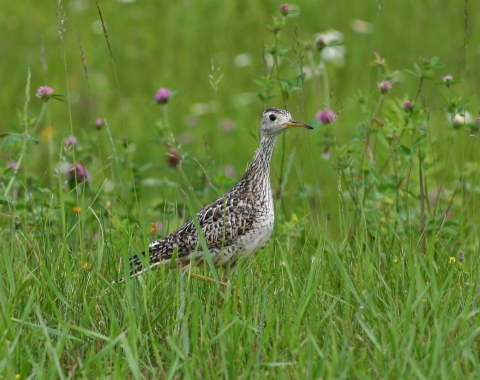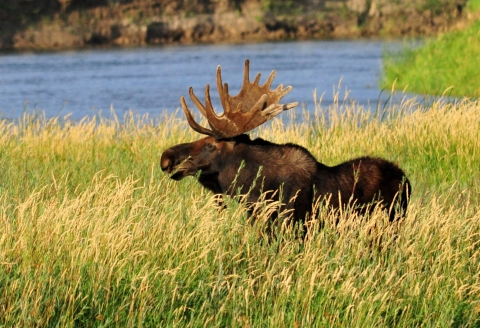Visit Us
Aroostook National Wildlife Refuge is open year-round from 1/2 hour before sunrise to 1/2 hour after sunset, seven days a week. Parts of the refuge are designated as a wildlife sanctuary and are closed to the public.
Visitors are encouraged to observe, study, photograph, and walk with nature in designated public areas. The best times for observing wildlife are early in the morning and late afternoon. The refuge has 13 miles of foot access trails, with varying difficulty from which wildlife can be viewed. There are also two wildlife observation blinds in close proximity to the refuge headquarters.
While out on the refuge, please dress appropriately. Winter temperatures average around 0 degrees Fahrenheit and summer temperature average around 75 degrees Fahrenheit. Black flies, mosquitoes and deer flies may be numerous from May to September throughout the refuge, so insect repellent and protective clothing are advisable.
- Hunting, fishing and trapping are not permitted at Aroostook National Wildlife Refuge.
- Bike riding is only permitted on the Auto Tour Route.
- Pets are only allowed on a leash, not to exceed 10 feet.
Location and Contact Information
- Aroostook National Wildlife RefugeView Details97 Refuge Road Limestone, ME 04750
Our Organization
Our Species
Moose
While moose appear gangly and awkward, they are truly a magnificent animal adapted to deep snow conditions and bitter cold. Maine is home to the highest moose population in the lower 48 states and an icon of the Maine woods. Bulls and cows use somewhat different habitats during the summer, which is a tradeoff between cooler temperatures for bulls and raising calves for cows. Bulls are typically found at higher elevations in mixed and hardwood stands, where food supply is less available, but shading provides cooler temperatures. Cows are found at lower elevations in regenerating stands and adjacent softwoods, because food is more concentrated. This concentrated food source limits the amount of time cows spend feeding, which limits calves vulnerability to predators. Moose winter where more hardwood browse is available, and they often feed in regenerating stands. Mature softwood is used as cover when snow depth exceeds 3 feet.
Get Involved
Volunteers are important to the work we do at Aroostook National Wildlife Refuge. Volunteer opportunities include leading tours and providing educational activities for school groups, staffing the nature store, conducting wildlife surveys, and removing invasive species invasive species
An invasive species is any plant or animal that has spread or been introduced into a new area where they are, or could, cause harm to the environment, economy, or human, animal, or plant health. Their unwelcome presence can destroy ecosystems and cost millions of dollars.
Learn more about invasive species .

























